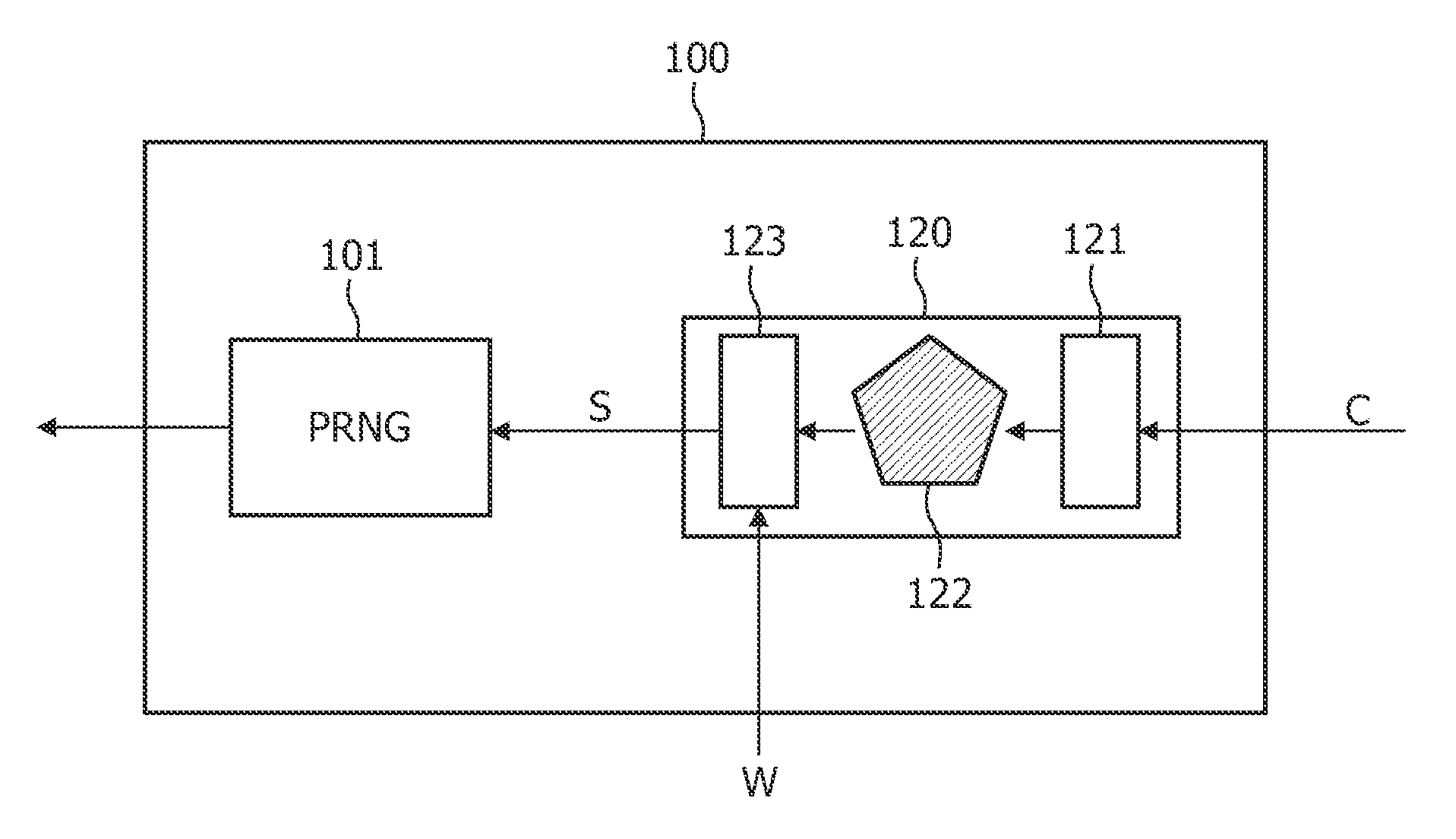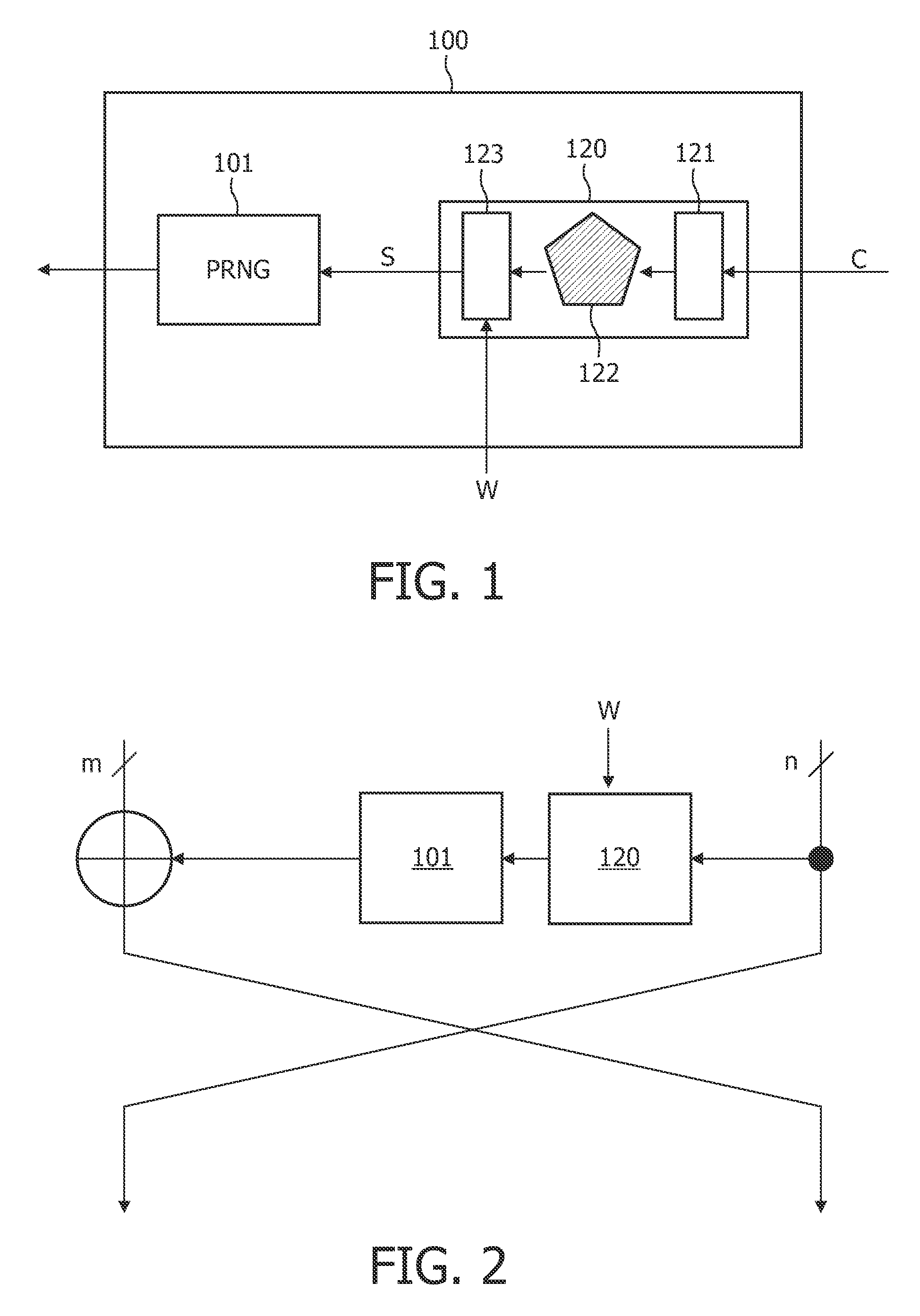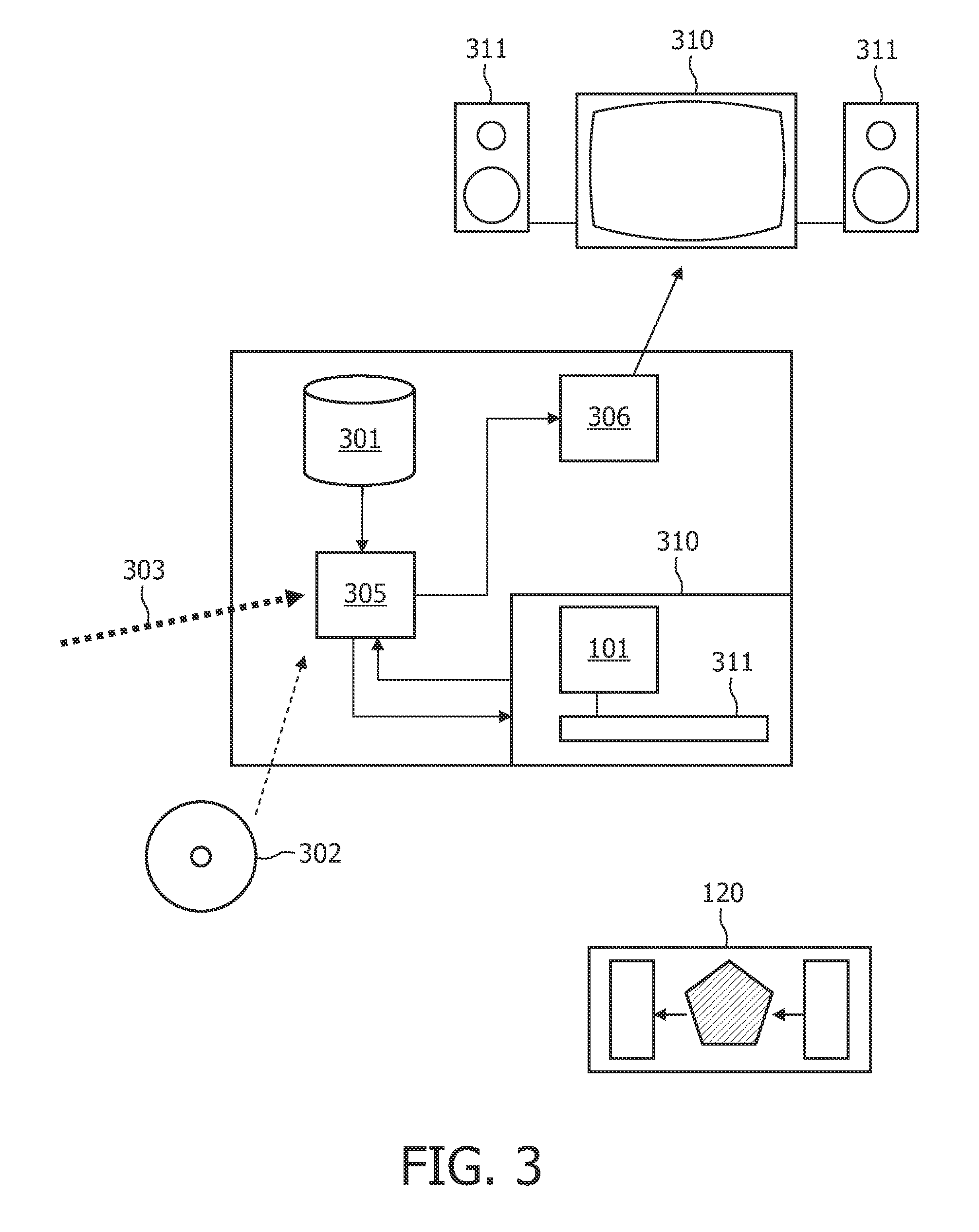Method of generating arbitrary numbers given a seed
a technology seed, applied in the field of generating arbitrary numbers given seeds, can solve the problems of difficult characterization, model or reproduction, difficult to produce physical copies, etc., and achieve the effect of convenient protection
- Summary
- Abstract
- Description
- Claims
- Application Information
AI Technical Summary
Benefits of technology
Problems solved by technology
Method used
Image
Examples
Embodiment Construction
[0037]FIG. 1 schematically illustrates a system 100 for generating arbitrary numbers given a seed. The system 100 comprises a pseudo-random number generator or PRNG 101 which produces the arbitrary numbers as output. PRNGs by themselves are well-known. Common types of PRNGs are linear congruential generators, lagged Fibonacci generators, linear feedback shift registers and generalized feedback shift registers. Recent instances of pseudo-random algorithms include Blum Blum Shub, Fortuna, and the Mersenne twister. An extensive treatment of PRNGs may be found e.g. in chapter 5 of the Handbook of Applied Cryptography by Menezes, Van Oorschot and Vanstone, CRC Press October 1996, ISBN 0-8493-8523-7.
[0038]A PRNG generally speaking produces a sequence of arbitrary numbers that satisfies a number of statistical tests. The sequence thus resembles a real random sequence, but as it is generated by a deterministic process it is not in fact random. To create a particular sequence, the PRNG must ...
PUM
 Login to View More
Login to View More Abstract
Description
Claims
Application Information
 Login to View More
Login to View More - R&D
- Intellectual Property
- Life Sciences
- Materials
- Tech Scout
- Unparalleled Data Quality
- Higher Quality Content
- 60% Fewer Hallucinations
Browse by: Latest US Patents, China's latest patents, Technical Efficacy Thesaurus, Application Domain, Technology Topic, Popular Technical Reports.
© 2025 PatSnap. All rights reserved.Legal|Privacy policy|Modern Slavery Act Transparency Statement|Sitemap|About US| Contact US: help@patsnap.com



